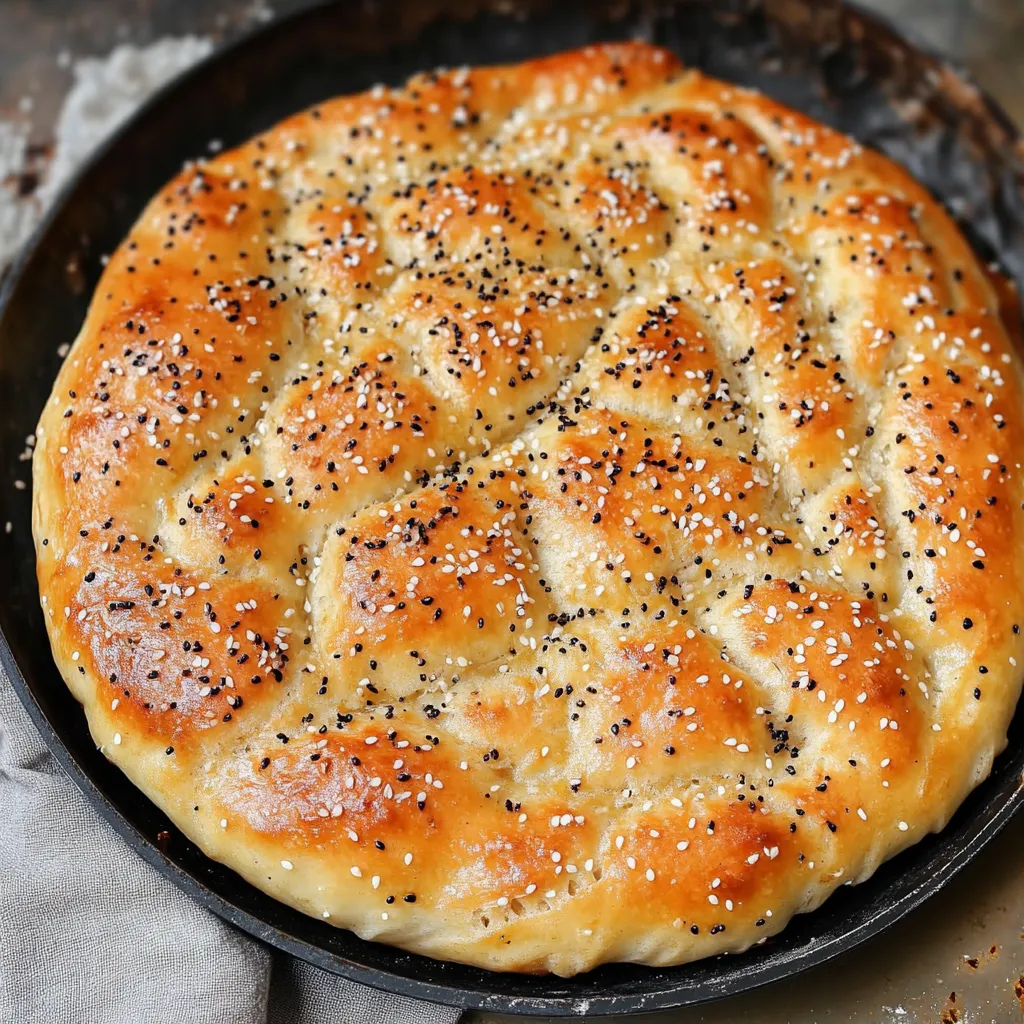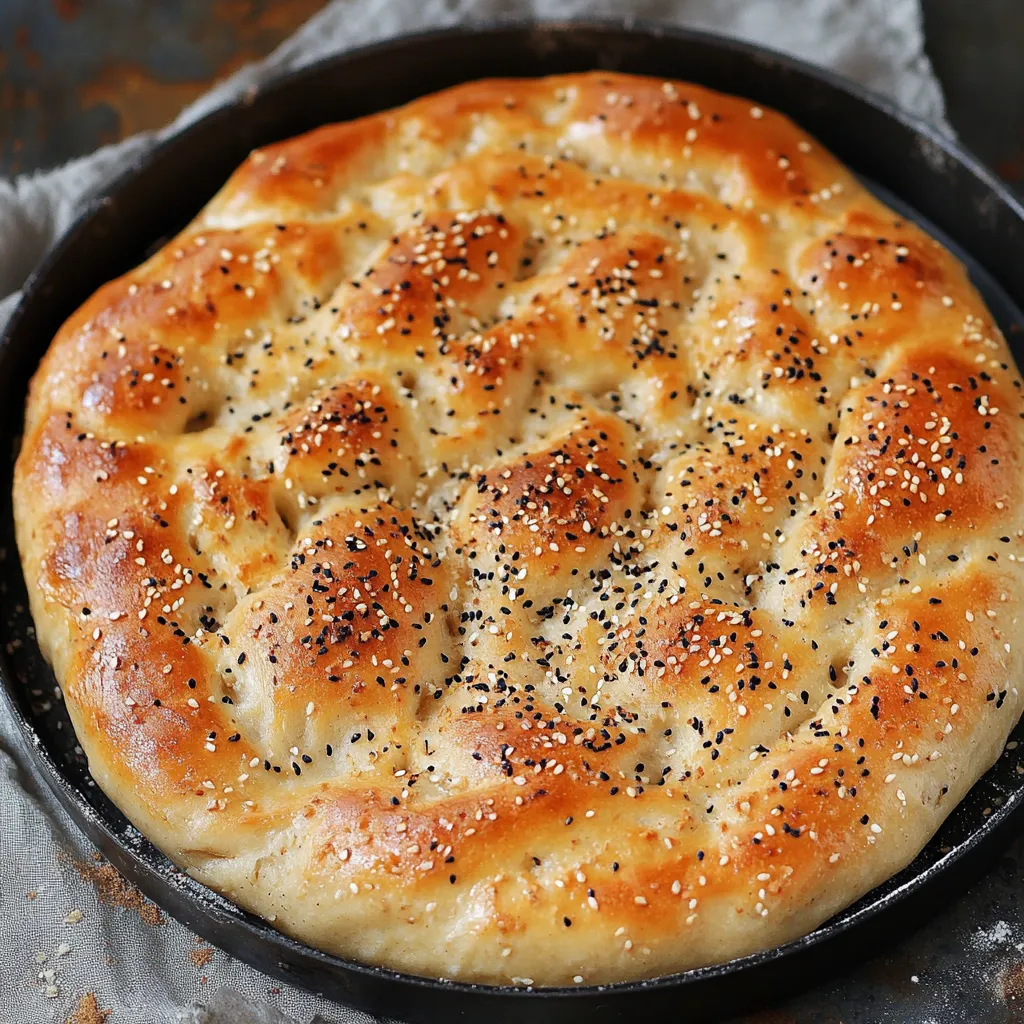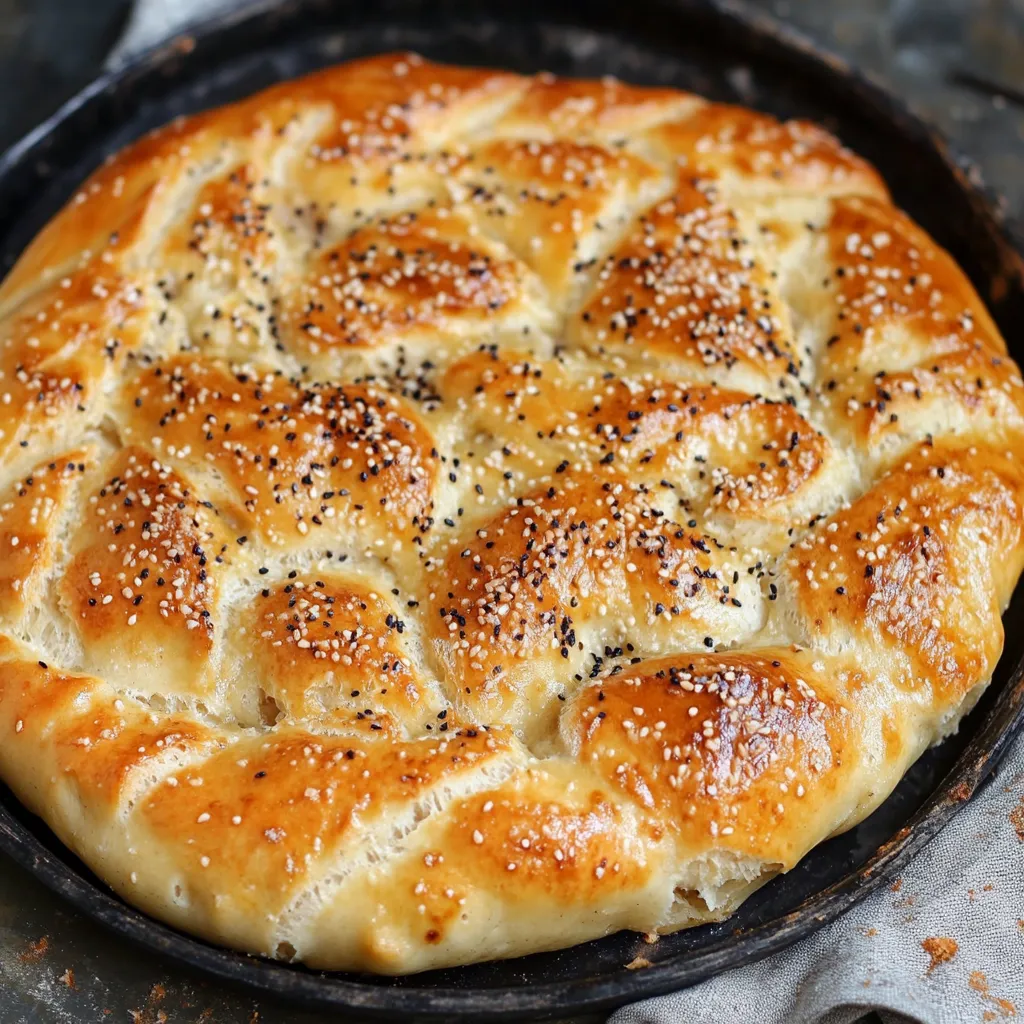 Save
Save
Making Turkish pide bread at home is easier than you think and it fills your kitchen with the same cozy vibes you get during Ramadan. Don't stress about kneading – you just mix it up and let it rise. The pattern and all those crunchy seeds on top make it not just super soft and tasty but something you'll want to show off.
I tried this bread for the first time with Turkish buddies during Ramadan and now it’s my favorite move when I want to make dinner feel a little extra special. People always get excited when they see those cool lines pressed across the top.
Luscious Ingredients
- Active dry yeast: Gives the loaf a good lift. Double-check your packet’s not too old so it rises nicely
- White sesame seeds: Roast up golden as the bread bakes. They’ll add a little crunch and a toasty flavor
- Nigella seeds: People might call them black cumin but they taste bold and a bit oniony – classic in Turkish bread
- Plain yogurt: A scoop in the egg wash adds a tang and helps you get that gorgeous golden top
- Sugar: Feeds the yeast so your dough gets nice and airy. Adds just a touch of sweetness
- Water and milk: Mixing both gives you a rich dough. The combo keeps things soft and moist
- Egg: You’ll use the white in the dough to help it puff up and save the yolk for brushing the top
- Salt: Brings out every bit of flavor and helps hold the shape you want
- Olive oil: Adds richness and helps the bread stay extra soft inside
- All purpose white flour: The main ingredient – makes the bread sturdy but not tough
Simple Directions
- Draw the pattern:
- Whisk egg yolk, a bit of yogurt, and a splash of water together. Brush the dough all over, then use your fingers to make a ring an inch from the edge. Press lines down and across inside the circle to make that eye-catching grid.
- Second rest:
- Lay a towel over your shaped round and let it relax another 20 minutes. Let it puff up and, while you wait, crank your oven to 400°F.
- Shape it up:
- Lay parchment on a baking pan and dust lightly with flour. Tip the dough on and go gentle with floured fingers, pressing it into a big disc about 9 or 10 inches across. Try not to squash the air bubbles.
- Let it rise round one:
- Cover the dough bowl with a towel and find a warm spot (about 75–80°F). Let it hang out for 30–40 minutes or until you see it’s doubled and has bubbles (a cold kitchen means you might wait up to an hour).
- Mix up the dough:
- Sift your flour and salt in a big bowl so it’s all mixed. Make a hole in the middle and add your yeast mix, olive oil, and egg white. Use a spoon to mix until you’ve got a sticky dough – don’t worry if it’s wetter than usual because that’s what lets it get light and puffy.
- Get yeast active:
- Pour warm milk and water (shouldn’t feel hot on your finger, about 100°F) into a bowl with sugar and yeast. Stir easy, let it sit 5–10 minutes until you see bubbles. That’s your sign yeast is happy and ready to go.

I seriously love what the nigella seeds do here. They remind me of picking up fresh bread from Istanbul street vendors – the warm loaves always covered in those tiny black seeds. My friend’s grandma told me folks in Turkey use them for both flavor and old-school remedies.
Storing Leftovers
Turkish pide is best the day you bake it when it’s fluffiest inside and crunchy outside. But if you’ve got extra, just wrap it in a clean towel and keep it at room temp for two days. To perk it up, warm it in a 350°F oven for five minutes. Freezing? No problem: put cooled bread in an airtight bag up to three months. Let it thaw on the counter and warm it again before you dig in.
Awesome Combinations
This bread goes with just about anything – tempting next to kebabs or hearty stews. It’s the perfect sponge for scooping up sauces. In Ramadan, it’s usually on the table right when the day’s fast ends. I like to serve it with mezze like creamy hummus, olive oil with za’atar, or labneh. You can slice it up for sandwiches or cut into chunks for dipping.
Pide Fixes
Bread dough looking way too sticky? Toss in a tablespoon of flour at a time and blend it in until you can work with it. Too tough? Add a splash of warm water little by little. If your kitchen’s cold, let the dough rise close to a warm oven or pop it in with just the light on. When it’s time to make the pattern, don’t push too far down – gentle pressure gives you those lines without making your bread flat.

This Turkish flatbread is so easy and packed with flavor, it’s bound to steal the show at your next meal!
Common Recipe Questions
- → How does this Turkish bread skip kneading?
Because this dough has more water, the gluten takes care of itself as it sits. You don’t have to push or fold it. Just let it rest longer and the dough sorts itself out without elbow grease.
- → How do they get that amazing design on top?
After the second rise, use your fingers to press a circle about an inch from the edge, then create a crisscross grid inside the circle. It’s the classic look and helps the bread bake evenly every time.
- → Is the egg wash totally necessary?
No worries if you can’t use eggs. The egg-yogurt spread helps gold up the top and gives a bit of tang, but you can just use thinned yogurt, or even olive oil or milk for a nice shine and color.
- → What if I don’t have nigella seeds?
Nigella (also called black cumin or kalonji) adds a punchy, kind of onion-oregano taste. But you can swap in black sesame, poppy, or even caraway seeds, though the taste will be a little different.
- → How do I know if my dough has rested long enough?
Your dough should be about twice as big after the first rise (usually half an hour or so). You want it to look fluffy. If you push a finger in, the mark should slowly puff back but not totally fill in. Weather and room temp make a difference.
- → Can I get this bread started the day before?
Yep, after the first rise you can stash it in the fridge for up to a day. It’ll even taste better. Warm it up to room temp before shaping, then just move on with the rest of the steps.
